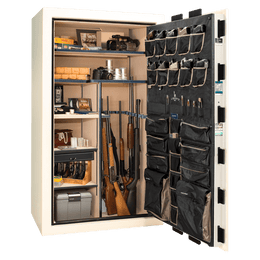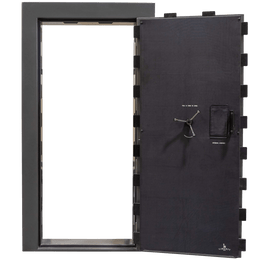If you’ve ever watched flock after flock pass over without giving your spread a second glance, you already know how much decoys matter. Waterfowl hunting isn’t just about finding birds or making your shots—how you present your spread is often the deciding factor between a limit in the bag or a long, cold sit. The good news is you don’t need a trailer full of high-end full-bodies to be successful. What you do need is a basic understanding of how spread size, quality, species mix, motion, and rigging all come together to fool birds into landing right where you want them.
Before we even dive into decoy specifics, here’s the bottom line: buy what you can afford. Waterfowling is already expensive, so quality shells and warm, waterproof clothing should always take priority over a pile of plastic birds. If you’re not equipped to stay warm, dry, and effective with your gun, the best spread in the world won’t matter. Once those essentials are covered, then it makes sense to put money toward decoys. This article will help you maximize that investment by breaking down how spread size, quality, species, motion, and rigging all factor into success.
Matching Spread Size to Water Size
One of the first and most important factors in decoy strategy is considering the body of water you’re hunting. Ducks expect to see very different things depending on whether they’re flying over a big lake or a small backwater slough.
On big water—lakes, reservoirs, bays, or coastal marshes—birds are used to seeing massive rafts of ducks and won’t be convinced by a dozen decoys sitting by themselves. Here, quantity matters over quality. Inexpensive bulk options from brands like Flambeau or Carry-Lite let you put out five to ten dozen without breaking the bank. The key isn’t realism up close—it’s visibility from a distance. A large group of decoys signals safety, and migrating ducks looking for a place to land will key in on those numbers.
Smaller waters are a different story. In backwaters, creeks, farm ponds, or beaver sloughs, ducks are not expecting to see massive groups. Instead, detail is what seals the deal. A dozen high-quality decoys with lifelike paint and non-reflective coatings will consistently outperform five dozen cheap, shiny ones. Ducks in these tight spots are often circling low and studying spreads more carefully. It’s worth paying extra for premium models when you know birds will be finishing right in your face. In short: big water demands quantity, while small water demands quality. Tailor your purchases to match whichever environment you’ll be in.

Choosing the Right Species
Variety is inherent to duck hunting, with the opportunity to harvest a half dozen species or more in any outing. Your decoys need to be tailored to this variety of birds just the same. Ducks fall broadly into two categories: puddle ducks and diving ducks. Mallards, pintails, wigeon, and teal are the mainstay puddle duck species. Mallards are of course the most versatile and should form the backbone of any puddle duck spread, while pintails and wigeon can add realism if they’re common in your area. On the other hand, diving ducks, like goldeneyes, canvasbacks, and scaup should form the core of diver spreads if you are targeting them on a given day.
If you’re hunting a mixed environment like Idaho’s Snake River—where puddlers and divers often overlap—you can combine both types of decoys. The key though is to avoid going fifty-fifty. Birds get suspicious of “split” flocks. Instead, build your spread around whichever species is most common and sprinkle in a few of the other type for realism. For example, if divers dominate, put out mostly goldeneyes with a handful of mallards off to the side. Species-specific spreads are one of the easiest ways to boost realism without buying dozens of extra decoys you may never need.
Adding Motion: The Secret Weapon
No matter how many decoys you put out, a spread that looks frozen on calm water won’t be very convincing. Ducks and geese are constantly moving—stretching, feeding, or splashing—and motion is what sells the illusion.
If your state allows motorized decoys, spinning-wing models like Mojo’s Lucky Duck are game-changers. Their flashing wings can be seen from incredible distances and often act like magnets for high-flying birds. A good guideline is one spinner or motion decoy for every dozen static decoys. On top of spinning wing decoys, things as simple as ripple makers or a well-placed group of decoys in a current can all add the subtle movement that convinces circling birds to commit. The important thing is to break up the stillness and catch a duck’s eye from above.

Anchors, Weights, and Rigging
Decoys are not one time use tools. If cared for, they can last for a lifetime. That said, they’re no good if they drift away and become impossible to retrieve. Every decoy needs a line and weight to keep it where it belongs, and the rigging of this depends heavily on water conditions.
To put it simply, on lakes and ponds, currents are minimal, so light weights are usually enough. In rivers, stronger weights are essential to keep decoys from drifting downstream. Ice, moss, and floating debris can add drag, so erring on the heavy side saves you from watching your spread float away.
As for line length, six feet is a solid standard. That gives you enough slack to ensure the weight rests firmly on the bottom, keeping your decoys steady in wind and current, without forcing you to wade out deeper than chest level just to pick them up. Anything longer makes retrieval a chore and risks putting you quite literally in over your head. It’s easy to overlook rigging, but smart choices here save frustration and lost gear later.

Goose Spreads
While ducks may be the gateway for many waterfowlers, goose hunting brings its own decoy considerations. Geese have sharper eyesight than ducks and won’t tolerate shine or sloppy spreads. Non-reflective finishes are non-negotiable.
On big agricultural fields where geese are trafficking—traveling from roost water to distant feeding grounds—your only chance is to convince them your field is worth a detour. That means volume. Dozens of silhouette decoys mixed with a handful of full-bodies create the look of a massive flock. Silhouettes are cheap, lightweight, and packable, making them ideal for building numbers. If you’re lucky enough to hunt a field the birds are already consistently feeding in, you can scale down. A smaller spread of well-placed full-bodies will often put the birds right where you want them.
Motion plays a role here, too. Geese don’t respond quite as well to spinning-wing decoys, but they do key in on subtle signs of movement. Flyers, which are windsock-style decoys that mimic geese gliding in, can be deadly on windy days. Flags, on the other hand, are simple fabric or plastic “wings” that hunters wave to simulate wingbeats. They add realism to a spread but must be used carefully. Geese will quickly spot a hunter waving a flag if they are directly overhead or out in front, so it’s best to flag only when birds are approaching from the side or behind.
Final Thoughts
Decoying waterfowl is part science, part art, and part budget management. No two hunts are the same, and no spread works everywhere. That said, by tailoring your setup to your conditions—big versus small water, puddle ducks versus divers, and field type for geese —you’ll stack the odds in your favor.
Start by covering the basics: shells, clothing, and staying warm. Then build your spread with an eye toward realism and practicality. Whether it’s a massive raft of diver decoys on big water, a handful of high-quality puddlers on a backwater slough, or a sprawling goose spread on a cut cornfield, the right setup will help bring birds into range.
Even then, remember this: decoys don’t guarantee birds in the bag. Some days the birds just won’t cooperate. But when everything comes together and a flock locks up, drops their wings, and sails straight into your decoys, you’ll know you made the right choices. That’s the art of decoying, and it’s what keeps us heading back to the marsh, season after season.







